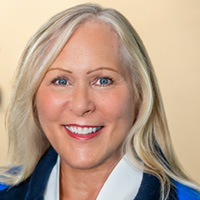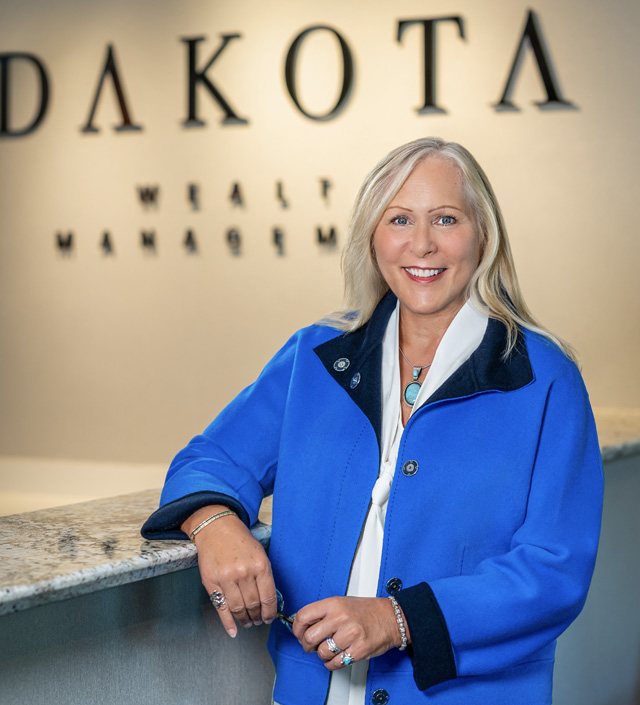
Part of my professional training involves being a Certified Exit Planning Advisor, through which we routinely help business owners grow their businesses so they may realize the intrinsic value when they eventually sell them. We know that many small businesses never sell at all. This is due to so many factors including the owner simply neglecting to plan their exit. Of those that do sell, owners are often frustrated with the result personally or financially or both. We are witness to the sale and division of family-owned businesses each day in our divorce and other client work.
As I turned 62, during the first year of the pandemic, my daughter-in-law who has worked with me in the business since 2016 was my intended succession plan. That summer, she alerted me to her change of heart. She loves the business and me, but taking on daily responsibility for a thriving wealth management practice did not suit her life plan any longer. Deflated, I gave myself time to absorb the news. Fast forward to the first quarter of 2021 and I knew I needed a plan. Some tools were right in front of me.
My business was truly small (<$100 million AUM) so I was told early and often, “No one will acquire your business.” As if I had survived and thrived 30 years in this industry by taking no for an answer. Besides, this wasn’t my first rodeo, my first business or my first RIA that I was transitioning.
Treat Yourself Like You Treat Your Clients
Emily Chiang, a fellow CFP who sold her own business, has prepared very effective slides and a workbook for others to do the same. She also consults. Emily and I had met years earlier at an industry function while she still owned her practice. Her work was my first leg up on the process that is so personal when it is your business you are selling versus guiding a client selling theirs.
I will admit to being surprised with my own emotions at critical places in my succession experience. The scenarios I contemplated including hiring a successor, which I quickly dismissed due to the time commitment involved along with the possibility that they, too, could change their mind. That scenario would leave me where I started, but two years into the future. So instead, I decided to go the merger and acquisition route.
Realizing I needed to treat my succession plan as carefully as I would any client’s, I hired a team to coach me through the process. I interviewed a number of consultants and ended up going with Advisor Growth Strategies (AGS), whom I found after reading a story about another firm they assisted who sung their praises. Most of the firms in the M&A space are well-represented at industry events and by client testimonials on their websites. AGS appeared to champion all well-run businesses in our space with size being a secondary consideration. My business was well run and I have a niche specialty that I think I know better than most advisors —divorce.
Do the Legwork
I had my firm valued twice in the years between 2009 and 2021 — well in advance of the intense process of interviewing firms, making selections, signing letters of intent. Getting a professional valuation of your business prior to a transition makes you aware of the positives and negatives a suitor will see. A smart owner takes that information and uses it to make their business stronger and more attractive to acquirers.
All in, I spent 2021 speaking with seven firms. With one exception, each firm treated me with professional respect. Early in the process, Brandon Kawal and Rebecca Daves at AGS spent time listening to my priorities which included 1) A growing firm that would support my growth post acquisition, 2) A firm where I could roll some of my equity forward into the acquiring company, and 3) A firm where I could continue my life’s work in changing the way divorce divisions happen.
Brandon and Rebecca’s job was to identify companies that shared these priorities in an acquisition and not waste everyone’s time with those disconnected from these priorities. AGS did an outstanding job. I would recommend them to any owner wanting great value for their time and money. It was Rebecca who first mentioned Dakota. More about them in a bit.
I also hired a whip smart business attorney, Karen Shapiro at Stein Sperling, who we have tapped in divorces where businesses are being traded, sold or divided. Karen is a no-nonsense attorney with a sense of humor and more importantly a good BS meter. She was essential to my understanding every term I was signing, the valuation, and what I might be living with in terms of things unsaid post close.
Seeking Something Different
What I dreaded meeting in the M&A process was most of what the advisory industry is: Very homogenous with little imagination or the ability and desire for change reflecting where we can go as an industry compared to where we have been. In my market, that means being in some sterile office space in Tysons (Virginia) with a Washington DC commute to boot. It means signing on and saluting or being pushed out if you do not conform. The homogenous firms like their sameness.
Rebecca described Dakota as a different kind of firm in the marketplace. Not a firm for everyone, so of course my interest was piqued. I have always felt like a fish out of water in our industry. So, could there be a firm somewhere where I would fit in and what would that look like?
AGS provided research on Dakota and then I researched it on my own, which is something I do when I want to understand something through my own filters. Peter Raimondi, the CEO and Founder at Dakota, has been an advisor. He has been wildly successful by any measure. He has also thrived through chaos.
First Impressions
On a plane to Palm Beach Gardens to meet the group, I wondered if my hopes might be dashed after face-to-face meetings. This process is akin to dating and all of us have our best side showing. Dakota’s best side was pretty darn good. Hard to resist, I would say. But I have trust issues (Remember, I spend a lot time with the issues in divorce.), so I then decided to take the team up on their invitation to reach out to other employee owners.
I drove from Virginia to Ohio to meet Carina Diamond in person. Carina is a force in our industry and inside the firm. Somehow, over the course of three decades, I was unfamiliar with the important work she has been doing. This includes Diversitas, a symposium with impact to increase diversity in our industry.
My angst inherent in the succession process started ceding to genuine excitement about what the future — my future — could hold. I signed a letter of intent and we got hitched in October 2021. The honeymoon is over and I love where I landed.
Coming from a family where women have owned businesses, my highest hope had always been to create a saleable business because of the value we bring to clients’ lives. Dakota believed in what I had created and it was mutual, as I am a proud owner in Dakota today. Peter is an inspiration because he sees the world as something to be explored and revel in. He attracts people whom I’m thrilled to be building a business with — a business where clients benefit.
Ten Steps That Made It Happen
The months of transition have given way to new opportunities, new clients, new energy. Rebecca was right: Dakota is a breath of fresh air. It is not an accident that I am in the right place for me. The 10 steps that made in happen include:
- Knowing myself.
- Having a recent business valuation.
- Hiring a firm which knows the M&A space in our industry.
- Hiring a great attorney to navigate terms and dollars.
- Taking the time needed for reverse due diligence.
- Writing down my top priorities.
- Making my top priorities clear to my team and suitors.
- Using my trusted network outside the process as a reality check.
- Having my firm “ready” to sell.
- Accepting the process as messy because it involves humans, but recognizing that good humans can do anything together when they share the same goals.
If you are facing a transition to exit or elevate your business, consider talking to those who have actually done what you are trying to do. I wish you the very best as you go!
Bonnie A. Sewell, CFP, CDFA, AIF, CEPA, is a managing director and senior wealth advisor with Dakota Wealth Management. She is the author of “Love-Jacked! Divorce Your Spouse, Not Your Dollars” and believes effective divorce financial planning is the best antidote to one of life’s most difficult transitions.







